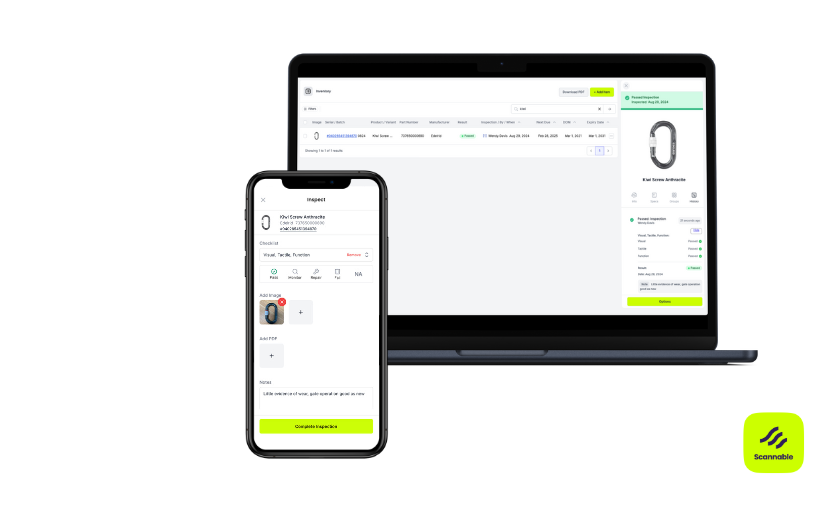
If your team relies on safety-critical equipment - harnesses, helmets, other rope access equipment or rescue kits - you already know how much work goes into keeping everything tracked, inspected, and audit-ready.
That’s where people often look for asset management software.
Instead of chasing paper logs or juggling spreadsheets, a digital asset management platform gives you one place to record every asset’s history - from inventory, to inspection, to expiry - so nothing slips through the cracks.
Traditional asset management software helps organisations record, track, and maintain the equipment they own.
But generic asset management tools aren’t designed specifically for safety-related industries.
For safety-critical teams, asset management requires:
Asset management for safety equipment needs to be your digital command centre for all your gear - accessible on site, on your phone, or from the office.
Many teams start with inventory tracking software, which focuses on stock levels and storage. But for PPE and safety gear, that’s not enough.
When you need to track individual items, schedule inspections, build compliance workflows and evidence audit trails - safety teams often start to look at asset management tools.
Inventory systems tell you what’s in the cupboard.
Asset management systems tell you whether it’s safe to use.
Read our blogs “NFC-based asset management” or “Asset tracking software for Rope Access teams” for more.
The reality is that a hybrid of inventory and asset management is required - that is, an equipment management system built specifically for safety teams. And that’s where Scannable comes in.
In rope access, mining, construction, or fire and rescue, lives depend on equipment that’s properly inspected and recorded.
A system that provides digital asset management ensures:
No more missing paperwork or guessing if a rope has been inspected- just tap, check, and confirm.
Tag equipment with durable NFC tags or use existing barcodes. A simple phone tap or scan pulls up its record instantly - no RFID gun required.
See our post on "Software that supports with 2D and NFC scanning for asset tracking" for more detail.
Set inspection intervals once. The system reminds you when each item is due - no spreadsheets or manual tracking.
Use manufacturer or custom inspection checklists to make checks consistent and complete.
Generate inspection histories, compliance summaries, and asset registers in seconds.
Connect directly with gear from 50+ manufacturers to pre-fill data and link inspection results.
Scannable is purpose-built for teams that manage thousands of safety assets across multiple sites.
With Scannable, you can:
Combining asset, inventory and compliance management tools into a single system that’s designed specifically for safety teams, it’s faster, easier, and audit-ready - built for the field, not just the office.
Whether you manage 100 harnesses or 10,000 PPE items, spreadsheets won’t cut it.
A purpose-built system that provides digital asset management for safety teams, like Scannable, keeps you efficient, ready for inspection and able to prove compliance to auditors at any moment.
Next read: "Best asset tracking software for safety equipment".